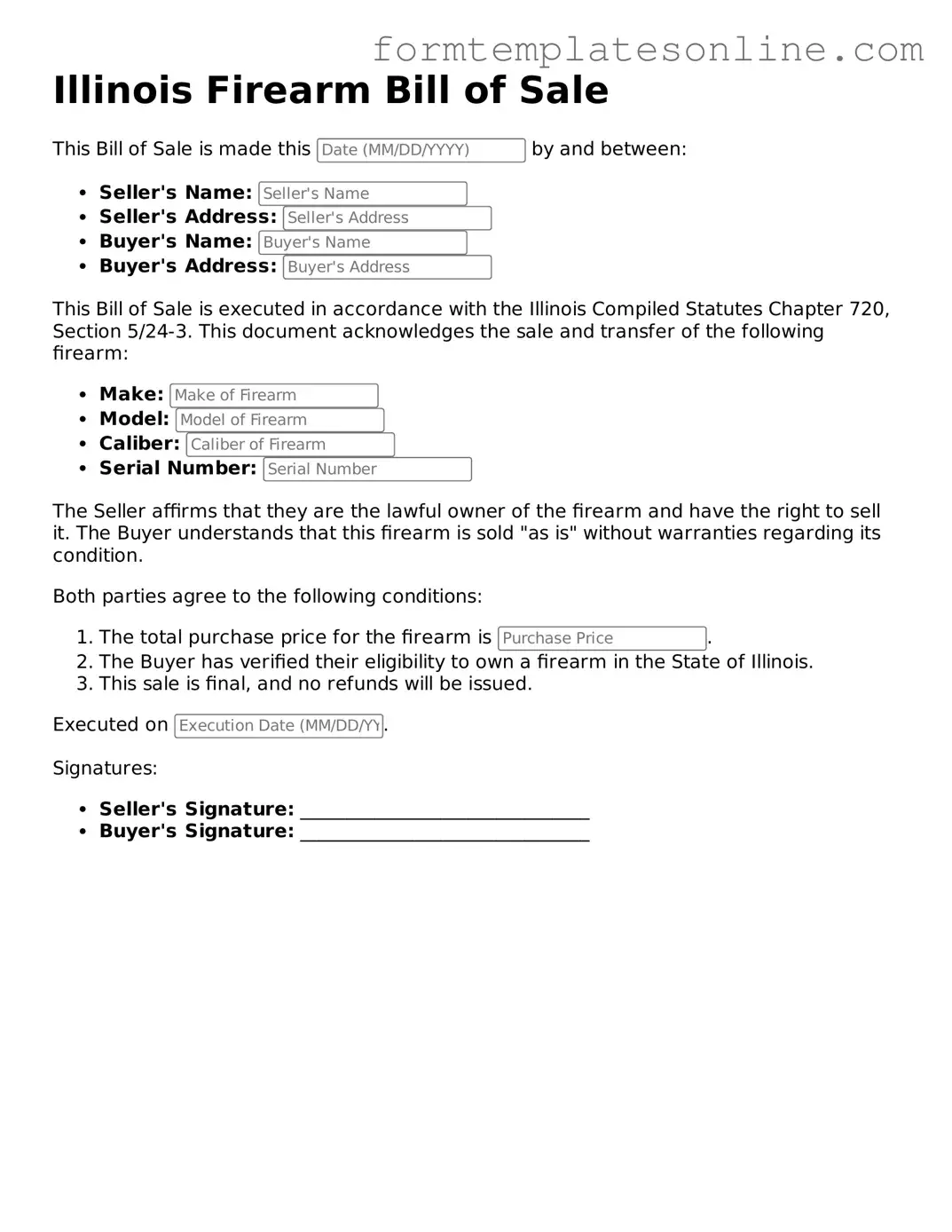What is an Illinois Firearm Bill of Sale?
An Illinois Firearm Bill of Sale is a legal document that records the sale or transfer of a firearm between two parties. It includes important details about the transaction, such as the buyer and seller's names, addresses, and the specific firearm being sold.
Is a Bill of Sale required for firearm transfers in Illinois?
While a Bill of Sale is not legally required for all firearm transfers in Illinois, it is highly recommended. This document serves as proof of ownership and can protect both the buyer and seller in case of future disputes.
What information should be included in the Bill of Sale?
The Bill of Sale should include the names and addresses of both the buyer and seller, the date of the transaction, a description of the firearm (make, model, caliber, and serial number), and the purchase price. Both parties should sign the document.
Can I create my own Bill of Sale?
Yes, you can create your own Bill of Sale. Ensure that it includes all necessary information and complies with any applicable laws. Many templates are available online to help guide you in drafting the document.
Do I need to have the Bill of Sale notarized?
No, notarization is not required for a Bill of Sale in Illinois. However, having it notarized can add an extra layer of authenticity and may be beneficial in case of disputes.
What if the firearm is a gift?
If you are giving a firearm as a gift, it is still a good idea to use a Bill of Sale. This document can help clarify the transfer of ownership and protect both parties in the future.
How long should I keep the Bill of Sale?
It is advisable to keep the Bill of Sale for as long as you own the firearm. If you sell or transfer the firearm again, retain the document for your records, as it may be needed for future transactions.
Are there any restrictions on who can buy a firearm in Illinois?
Yes, certain individuals are prohibited from purchasing firearms in Illinois. This includes those with felony convictions, individuals with mental health issues, and those subject to certain protective orders. Buyers must have a valid Firearm Owner's Identification (FOID) card.
What happens if the Bill of Sale is lost?
If the Bill of Sale is lost, it may be challenging to prove ownership. It is wise to keep a copy in a safe place. If you lose it, consider creating a new Bill of Sale, if possible, with the other party's consent.
Can I sell a firearm to someone from another state?
Yes, you can sell a firearm to someone from another state, but you must follow federal and state laws. Generally, the buyer must have the appropriate licenses and permits, and the sale must comply with both states' regulations.
